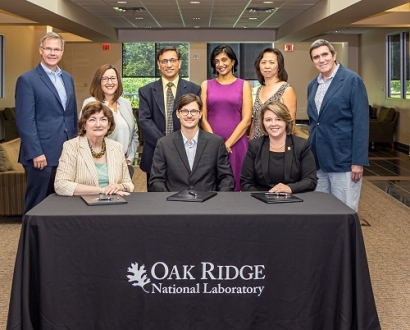
The system combines biology and electrochemistry to degrade organic waste—such as plant biomass or food waste—to produce hydrogen. During the microbial electrolysis process, a diverse microbial community first breaks down organic material.
“There are usually thousands of microbes that are required to convert a complex organic mixture from biomass into electrons,” said Abhijeet Borole, who co-founded Electro-Active Technologies with Alex Lewis, the company’s CEO. “We developed an enrichment process to create this [microbial] consortium to efficiently extract electrons from organic materials.”
An electrolysis method they designed then combines the protons and electrons into hydrogen molecules. Although Borole and Lewis originally developed both processes to address the problems of liquid waste formed during biofuel production, Electro-Active Technologies will focus on fighting food waste.
The duo selected food waste as a microbial feedstock after interviewing 80 customers across waste-to-hydrogen industries while participating in DOE’s Energy I-Corps, a program that helps accelerate commercialization efforts at DOE laboratories. Because customers often must pay to dispose of food waste, the food waste-based feedstock presents economic advantages over using biomass, which must be purchased. The company is creating prototypes for modular waste conversion systems that customers can place onsite.
The initial research that enabled this technology development was supported by DOE’s Office of Energy Efficiency and Renewable Energy, Bioenergy Technologies Office. The technology was jointly patented by ORNL and the University of Tennessee Research Foundation, a non-profit affiliate of the UT system that promotes the commercialization of UT intellectual property.
Photo: Seated are Michelle Buchanan, ORNL deputy for science and technology; Alex Lewis, CEO of Electro-Active Technologies; and Stacey Patterson, University of Tennessee Research Foundation president, who signed the licensing agreement for two ORNL microbial electrolysis technologies. Standing, from left, are Mike Paulus and Jennifer Caldwell of ORNL; Abhijeet Borole of Electro-Active Technologies; Maha Krishnamurthy of UTRF; and Edna Gergel and Brian Davison of ORNL. Credit: Carlos Jones/Oak Ridge National Laboratory, U.S. Dept. of Energy

